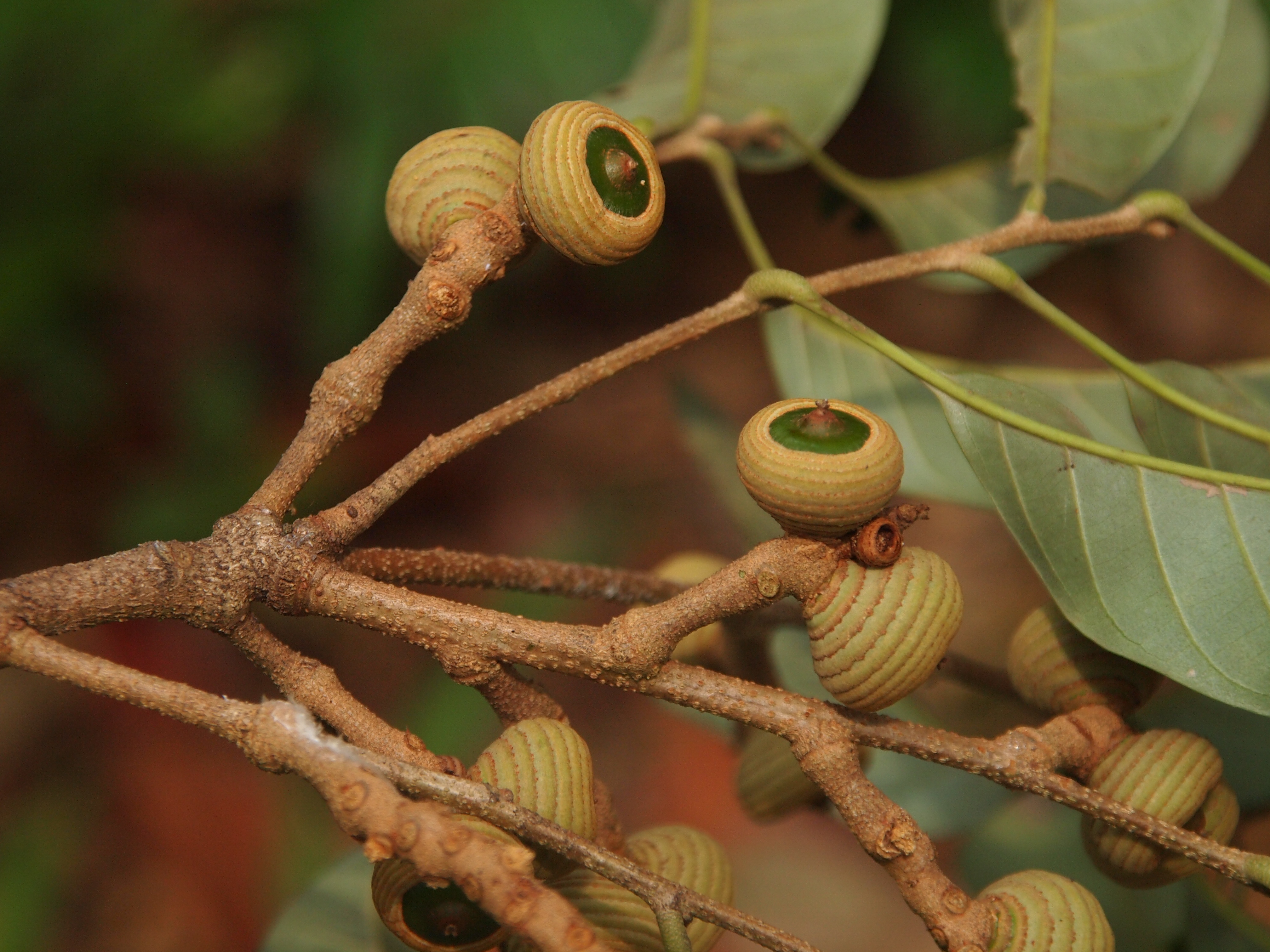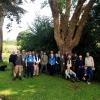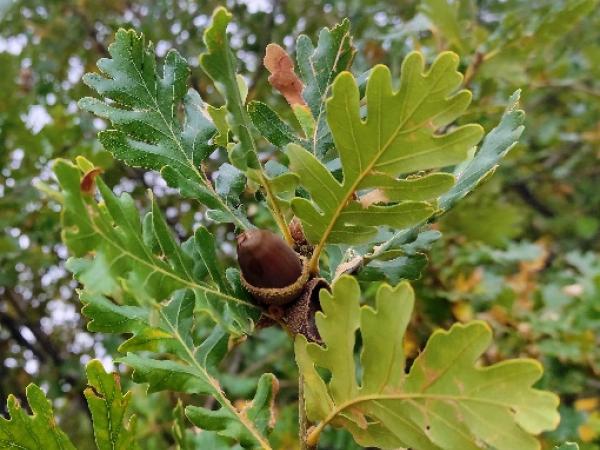Editor's Picks
Plant Focus
Quercus argentata is an evergreen tropical oak native to the islands of Borneo (absent in Brunei), Sumatra, and Western Java, as well as to Peninsular Malaysia. On Mount Kinabalu this species is found in lower montane forests up to an elevation of 2,700 m above sea level. It was first described by Pieter Willem Korthals in 1842. The epithet argentata refers to the silvery hairs on the lower surface of its leaves.
Within the region where Q. argentata occurs, around 20-25 species of Quercus can be found. They occur in lowland mixed dipterocarp to montane forest, from sea level up to 3,350 m elevation, but are most commonly found between 600 and 1,500 m above sea level, on sandy clay or sandy loam and ultrabasic soils overlying sandstone or granite substrates. The species is similar in appearance to Q. nivea, with which it shares the distribution range in Borneo (Sarawak) and Peninsular Malaysia.

Quercus argentata can grow up to 40 m tall, with a DBH of up to 1 m. Buttresses reach up to 1-1.5 m high. Bark is generally dark brown, with a smooth surface and pale lenticels in vertical lines, sometimes with horizontal cracks. The inner bark is brown, laminated to granular, up to 2 cm thick. The sapwood is pale colored, sometimes a little yellow. Twigs are glabrous, densely lenticellate, and greyish brown. Terminal buds are ovoid to globose, 2-3 × 2-2.5 mm, tomentose with stellate or simple hairs, glabrescent. Stipules are densely hairy, linear-acute shaped, ranging from 3-5×1-1.5mm.
Leaves are spirally arranged, coriaceous, glabrous and glossy above, tomentose with dense silvery stellate hairs on the lower surface. Leaves are glabrescent, variable in shape from elliptic to oblong, lanceolate, or oblanceolate. Sizes usually range from 10-18 cm long to 4-7 cm wide, with an attenuate, rounded, or acute, slightly asymmetrical base. Margins are entire and revolute, and apices sharply acute to acuminate. Acumen short, up to 5-15 mm long. Midrib and nerves strongly prominent beneath, impressed above, between 10-18 pairs of lateral veins, parallel, arching near the leaf margin, forming an angle of 50-75º with the midrib. The intercostal venation is scalariform, but not very clear on either surface. Petioles are slender, 1-4 cm long, blackened at the base, adaxially flat, grooved, or sulcate, without hairs.

Male inflorescences are 5-10 cm long in paniculate clusters of 3-4 on lateral shoots; bracts ovate-acute, 1.5-2 × 0.5-1 mm, densely tomentose with simple hairs. Perianth is five-lobed, connate at the base, hairy, with six stamens and filaments hairy at their base. Female inflorescences are many-flowered, slender, 2-3 cm long, densely covered with simple hairs. Bracts and bracteoles are linear-acute, 0.5-1 mm long. Perianth is 4-6-lobed, densely tomentose outside; ovary conical, styles 3-4, free and slightly recurved and pubescent with long golden-brown hairs at their base.
Young cupules are turbinate or ovoid-conical, flattened or rounded at the top and attenuate at base. The 8-12 lamellae are thin, dentate, with dense brownish tomentum, covering up to 1/3 of the acorn. Mature cupules are cup-shaped, obconical or obovoid and densely pubescent, with 8-10 free lamellae which are denticulate at the rim. Acorns are elongated conical, cylindrical, or ovoid-globose, 2-3 × 1.5-2 cm, usually dark chocolate-brown when mature and generally glabrous. The apex is rounded or acute, and the base is rounded. The flowers appear in July-September, with the onset of fruiting starting in the same year in October and continuing until May of the following year. Infructescences are persistent on the tree.

Within the broader tropical region where Q. argentata grows, several hundred species of Fagaceae can be found. Of these, 90 species belong to Quercus. The updated conservation status for Q. argentata and most of these Quercus species is uncertain. We know fairly little on their ecology and the numbers grown ex situ are small. Alarmingly though, over a third of these (33 spp.) were ranked on the Red List of Oaks in 2007. As Asia experiences some of the highest pressures on its forest resources and remaining natural habitat, it is to be expected that this number has increased over the past decade and an urgent update of the current status is needed, to be followed by measures to ensure the future survival of the amazing diversity in the Asian oak assemblage.

All photos taken in Western Sumatra, Indonesia © Center for Asian Conservation, Kyushu University (2017)
Further Reading
Hélardot, J-L. “Quercus argentata.” Oaks of the World. Published on the internet. http://oaks.of.the.world.free.fr/quercus_argentata.htm [accessed July 31, 2017]
Korthals, P.W. Verhandelingen over De Natuurlijke Geschiedenis Der Nederlandsche Overzeesche Bezittingen. Luchtmans, 1842.
Oldfield, S. and A.Eastwood. The Red List of Oaks. Fauna & Flora International, 2007.
Strijk, J.S. “Quercus argentata Korth.” AsianFagaceae.com. Published on the internet. http://www.asianfagaceae.com/quercus/quercus_argentata/ [accessed September 8, 2017]
Trehane, P. (2007 onwards). “Quercus argentata.” The Oak Names Checklist. Published on the internet. http://www.oaknames.org/search/fullname.asp?id=46 [accessed July 31, 2017]















